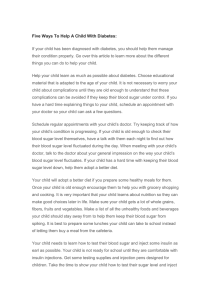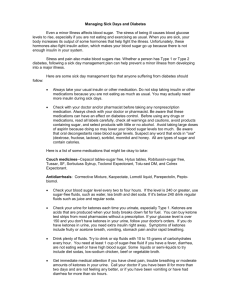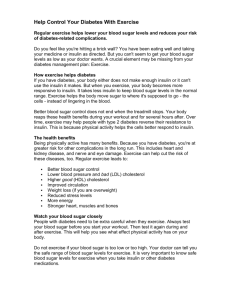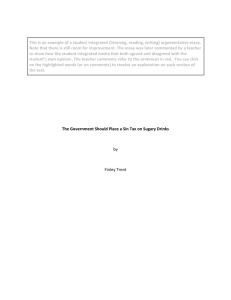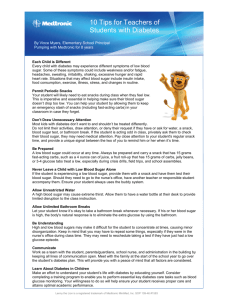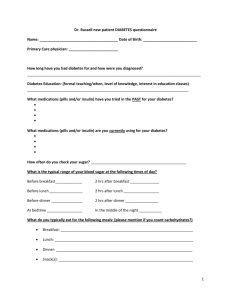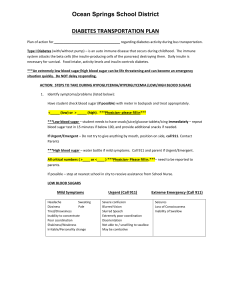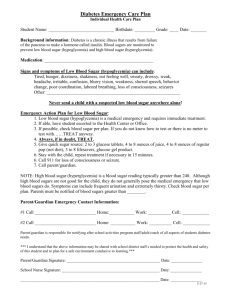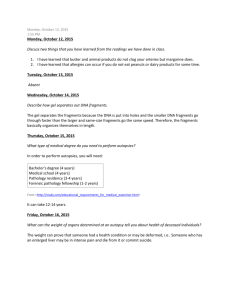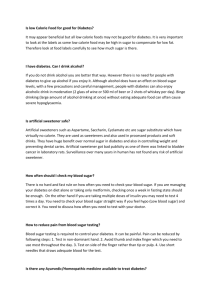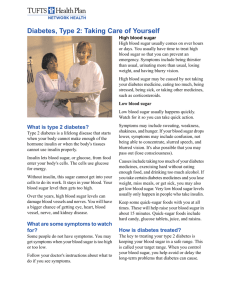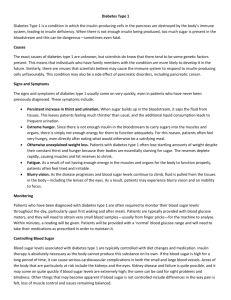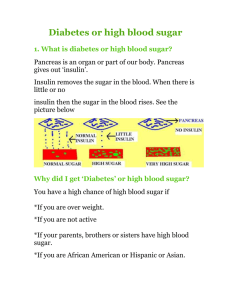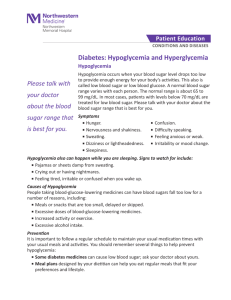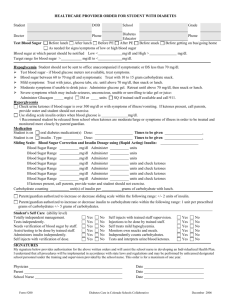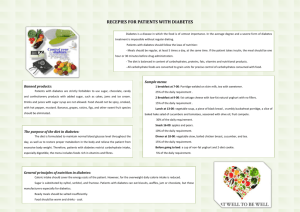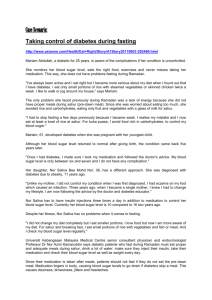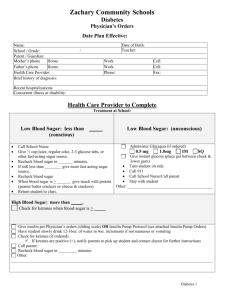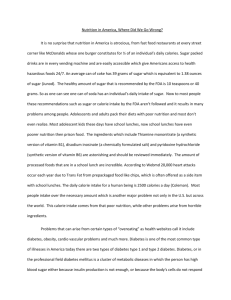Be Active with Diabetes
advertisement
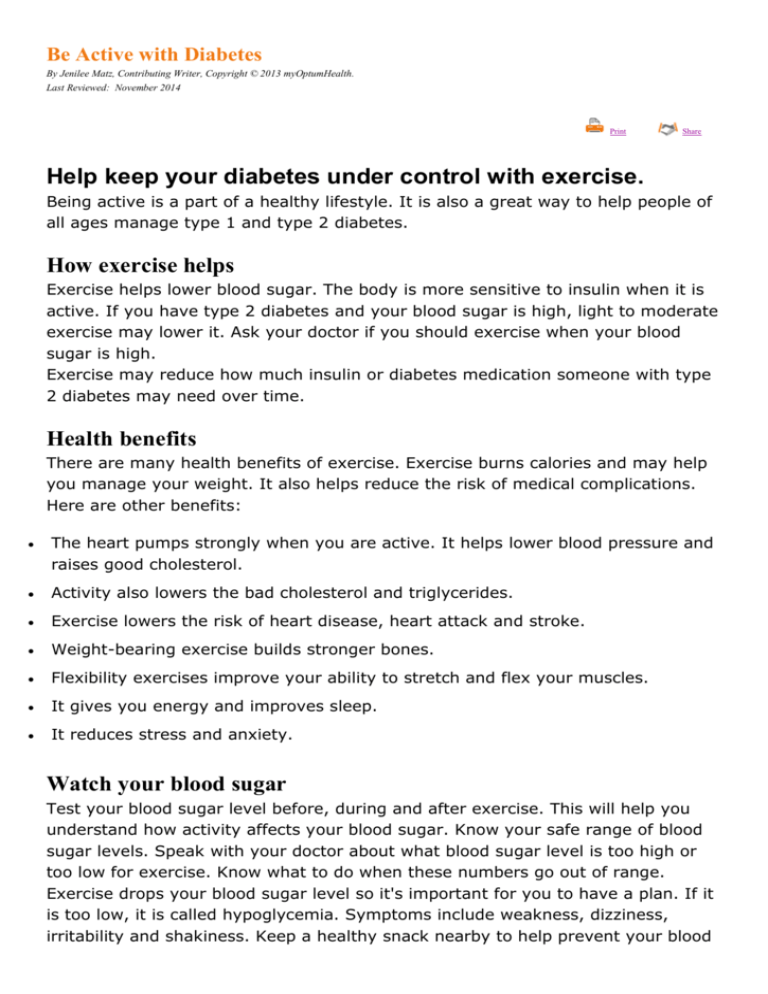
Be Active with Diabetes By Jenilee Matz, Contributing Writer, Copyright © 2013 myOptumHealth. Last Reviewed: November 2014 Print Share Help keep your diabetes under control with exercise. Being active is a part of a healthy lifestyle. It is also a great way to help people of all ages manage type 1 and type 2 diabetes. How exercise helps Exercise helps lower blood sugar. The body is more sensitive to insulin when it is active. If you have type 2 diabetes and your blood sugar is high, light to moderate exercise may lower it. Ask your doctor if you should exercise when your blood sugar is high. Exercise may reduce how much insulin or diabetes medication someone with type 2 diabetes may need over time. Health benefits There are many health benefits of exercise. Exercise burns calories and may help you manage your weight. It also helps reduce the risk of medical complications. Here are other benefits: The heart pumps strongly when you are active. It helps lower blood pressure and raises good cholesterol. Activity also lowers the bad cholesterol and triglycerides. Exercise lowers the risk of heart disease, heart attack and stroke. Weight-bearing exercise builds stronger bones. Flexibility exercises improve your ability to stretch and flex your muscles. It gives you energy and improves sleep. It reduces stress and anxiety. Watch your blood sugar Test your blood sugar level before, during and after exercise. This will help you understand how activity affects your blood sugar. Know your safe range of blood sugar levels. Speak with your doctor about what blood sugar level is too high or too low for exercise. Know what to do when these numbers go out of range. Exercise drops your blood sugar level so it's important for you to have a plan. If it is too low, it is called hypoglycemia. Symptoms include weakness, dizziness, irritability and shakiness. Keep a healthy snack nearby to help prevent your blood sugar from getting too low. Your doctor may recommend glucose tablets, carbohydrates or other ways to manage hypoglycemia. Know what to do if you develop it. You might be hyperglycemic if your blood sugar is too high when exercising. If it is too high, your body may start breaking down fat instead of sugar. This produces ketones. Ketones can make you very sick. People with type 1 diabetes should avoid being very active when ketones are present in urine or blood. Know what to do if you develop this problem. Getting started with exercise Before beginning exercise, check with your doctor. Find out which exercises are safe for you. Some people with diabetes are better off with certain types of exercise than they are with others. A few tips: Start slowly. Work out for 5 to 10 minutes most days of the week and increase to 30 minutes. Gradually increase the time and intensity of your activity. Find an activity you enjoy. Try different activities like biking, swimming or dancing. If you have high blood pressure or eye problems, some exercises like weightlifting may not be good for you. Exercise with a group. Find a partner or join a group. Exercising together may be more fun and motivating. Drink water. Stay hydrated. Drink water before, during and after your workout. Take care of your feet. Your doctor may check your feet to make sure you have no special problems. If you develop any sores or blisters, call your doctor. Wear comfortable shoes that fit. Wear socks that keep moisture away from your feet. Always wear a medical identification bracelet or necklace whether or not you are active. If your child has diabetes, alert the school so that teachers and sports coaches are informed and know how to help in an emergency. The information about educational or therapeutic approaches is provided for educational purposes only. Certain treatments may or may not be covered through your benefit plan. Coverage typically depends on your plan specifications and relevant guidelines maintained in relation to your benefit plan.
